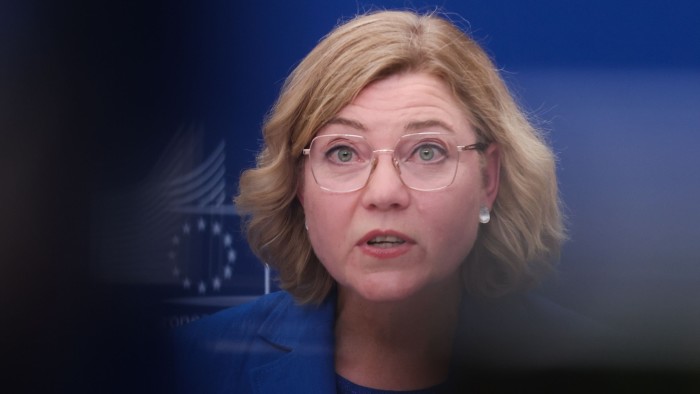Unlock the Editor’s Digest for free
Roula Khalaf, Editor of the FT, selects her favourite stories in this weekly newsletter.
The EU has unveiled its code of practice for general purpose artificial intelligence, pushing ahead with its landmark regulation despite fierce lobbying from the US government and Big Tech groups.
The final version of the code, which helps explain rules that are due to come into effect next month for powerful AI models such as OpenAI’s GPT-4 and Google’s Gemini, includes copyright protections for creators and potential independent risk assessments for the most advanced systems.
The EU’s decision to push forward with its rules comes amid intense pressure from US technology groups as well as European companies over its AI act, considered the world’s strictest regime regulating the development of the fast-developing technology.
This month the chief executives of large European companies including Airbus, BNP Paribas and Mistral urged Brussels to introduce a two-year pause, warning that unclear and overlapping regulations were threatening the bloc’s competitiveness in the global AI race.
Brussels has also come under fire from the European parliament and a wide range of privacy and civil society groups over moves to water down the rules from previous draft versions, following pressure from Washington and Big Tech groups. The EU had already delayed publishing the code, which was due in May.
Henna Virkkunen, the EU’s tech chief, said the code was important “in making the most advanced AI models available in Europe not only innovative, but also safe and transparent”.
Tech groups will now have to decide whether to sign the code, and it still needs to be formally approved by the European Commission and member states.
The Computer & Communications Industry Association, whose members include many Big Tech companies, said the “code still imposes a disproportionate burden on AI providers”.
“Without meaningful improvements, signatories remain at a disadvantage compared to non-signatories, thereby undermining the commission’s competitiveness and simplification agenda,” it said.
As part of the code, companies will have to commit to putting in place technical measures that prevent their models from generating content that reproduces copyrighted content.
Signatories also commit to testing their models for risks laid out in the AI act. Companies that provide the most advanced AI models will agree to monitor their models after they have been released, including giving external evaluators access to their most capable models. But the code does give them some leeway in identifying risks their models might pose.
Officials within the European Commission and in different European countries have been privately discussing streamlining the complicated timeline of the AI act. While the legislation entered into force in August last year, many of its provisions will only come into effect in the years to come.
European and US companies are putting pressure on the bloc to delay upcoming rules on high-risk AI systems, such as those that include biometrics and facial recognition, which are set to come into effect in August next year.

